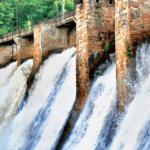Global studies indicate rapid urbanization and mushrooming of urban canters along with migration from villages to cities. With increased road connectivity the tendency of inaccessible areas, to areas with better access to social services like health, education and economic opportunities. Nepal will have close to 33 million people with demographics skewed towards the young. 70% of the population will be under 30 years of age which means increased mobility towards urban centers. While technology will make remote working easier, people will still like to gravitate towards cities.
The Nepali attachment towards ownership of land is expected to not go under any transformation. Which means the pressure on smaller parcels of land remain. With road connectivity more parcels of land will be available for residential and commercial purposes. Despite the increased supply, the demand will keep pushing prime real estate prices up as people will move to suburban areas away from the city center. The pricing will continue to be determined based on city center prices that will remain high due to short supply of space and high competition for prime assets.
In case Nepal will transform with increased economic activities towards an entrepreneurial culture away from rent-seeking culture, the trends of investment in non-productive assets like land may reduce to a certain extent, but given the limited inventory of land, it may not impact the pricing to a large extent. Construction industry will be one of the biggest growth areas.
The government including its army holds the largest inventory of land and it will depend on how government decides to unlock the value of its land. Further, the opening up of the sector for foreign investors and developers will also have impact on the sector. The emerging discourse around climate change, ecological balance and living trends will also have an impact on the sector.





